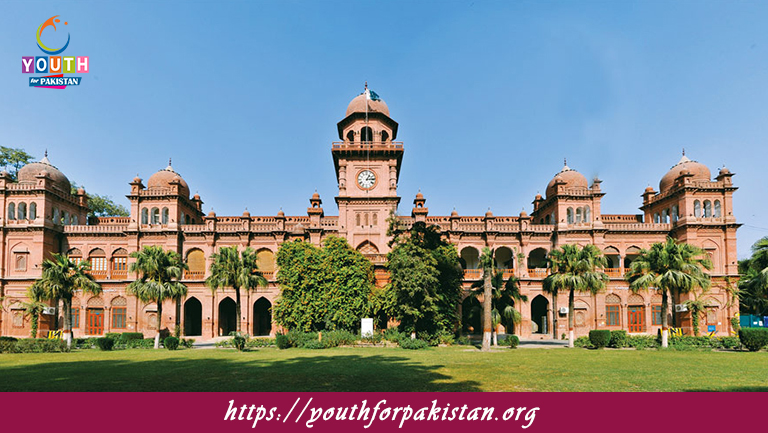The following are Muslim Scientists – Ibn Haytham Alhazen MCQs with answers related to Islamic Studies. We have arranged the most important and repeated MCQs in all the competitive examinations. The students can clear their concepts for Muslim Scientists – Ibn Haytham Alhazen MCQs online quiz by attempting these.
Muslim Scientists – Ibn Haytham Alhazen Online MCQs with Answers
Who is often referred to as the “Father of Optics” and made significant contributions to the field of optics and vision?
A) Al-Razi
B) Al-Kindi
C) Ibn Haytham (Alhazen)
D) Ibn Sina (Avicenna)
In which century did Ibn Haytham (Alhazen) live and work?
A) 7th century
B) 8th century
C) 9th century
D) 10th century
Ibn Haytham’s work on optics was instrumental in introducing which concept related to light and vision to the world?
A) Refraction
B) Reflection
C) Diffraction
D) Dispersion
What is the English term derived from Ibn Haytham’s name that represents the study of the behavior of light and its interaction with matter?
A) Optics
B) Astronomy
C) Geometry
D) Chemistry
Ibn Haytham’s most famous work, “Kitab al-Manazir,” was translated into Latin, giving rise to what term in optics?
A) Opticus
B) Oculus
C) Opticae Thesaurus
D) Opticalis
Besides optics, Ibn Haytham also made contributions to which other scientific field?
A) Astronomy
B) Chemistry
C) Mathematics
D) Medicine
Ibn Haytham’s work on optics and vision laid the foundation for the understanding of which optical instrument that corrects vision?
A) Telescope
B) Microscope
C) Eyeglasses
D) Binoculars
Which Islamic empire did Ibn Haytham (Alhazen) serve as a scholar and scientist during his lifetime?
A) Umayyad Caliphate
B) Abbasid Caliphate
C) Ottoman Empire
D) Safavid Empire
Ibn Haytham’s work on optics and vision influenced the development of which branch of science that deals with the study of light and its properties?
A) Physics
B) Chemistry
C) Biology
D) Mathematics
Which of the following was not a concept or phenomenon in optics that Ibn Haytham studied and wrote about?
A) Refraction
B) Reflection
C) Diffraction
D) Gravity
In addition to his work on optics, Ibn Haytham also made significant contributions to which field of science?
A) Chemistry
B) Astronomy
C) Medicine
D) Mathematics
Ibn Haytham’s groundbreaking work on optics challenged the prevailing ideas of which ancient Greek philosopher and scientist?
A) Aristotle
B) Euclid
C) Archimedes
D) Hippocrates
Ibn Haytham’s book “Kitab al-Manazir” was translated into Latin, and its Latin title “Opticae Thesaurus” contributed to the development of which branch of modern science?
A) Chemistry
B) Optics
C) Medicine
D) Geology
What is the term used to describe the study of how light interacts with various materials and substances, a field that Ibn Haytham contributed to?
A) Optics
B) Photonics
C) Spectroscopy
D) Optoelectronics
In which city did Ibn Haytham primarily conduct his scholarly and scientific work?
A) Cairo
B) Baghdad
C) Cordoba
D) Samarkand
What was the primary language in which Ibn Haytham wrote his influential works on optics and vision?
A) Latin
B) Greek
C) Arabic
D) Persian
Ibn Haytham’s work on optics and vision introduced systematic methods for understanding and explaining which aspect of the natural world?
A) Geology
B) Light and vision
C) Animal behavior
D) Plant growth
Which of the following is not a work attributed to Ibn Haytham?
A) “Kitab al-Manazir” (Book of Optics)
B) “Al-Kitab al-Qanun al-Mas’udi” (The Mas’udi Canon)
C) “Maqala fi’l-Basariya” (Treatise on Vision)
D) “Al-Mutawakkil” (On the Conical Astrolabe)
Ibn Haytham’s work on optics introduced the concept of what term, which describes the bending of light as it passes from one medium to another?
A) Reflection
B) Refraction
C) Dispersion
D) Diffraction
In addition to his work on optics, Ibn Haytham also made contributions to which scientific field that deals with the study of celestial objects and the universe?
A) Chemistry
B) Biology
C) Astronomy
D) Geology
Ibn Haytham’s work on optics and vision laid the foundation for the understanding and development of which optical instrument used in modern science and technology?
A) Telescope
B) Microscope
C) Camera
D) Spectrometer
What is the term used to describe the phenomenon in which light waves spread out as they pass through an opening or around an obstacle, a phenomenon studied by Ibn Haytham?
A) Reflection
B) Refraction
C) Diffraction
D) Dispersion
What is the English term for the book “Kitab al-Manazir,” which Ibn Haytham is most famous for, and which laid the foundations for the science of optics?
A) Optics
B) Visionaries
C) Theoretical Optics
D) Book of Optics
Ibn Haytham’s work on optics introduced the concept of the camera obscura, which later contributed to the development of which modern device?
A) Television
B) Microscope
C) Camera
D) Telescope
Ibn Haytham’s contributions to optics and vision influenced the development of which modern branch of science that deals with the behavior of light at the quantum level?
A) Photonics
B) Quantum mechanics
C) Nuclear physics
D) Thermodynamics
In Ibn Haytham’s time, what term was commonly used to describe the study of light and vision, a field that he significantly advanced?
A) Optics
B) Photology
C) Illumination
D) Radiology
Which of the following is not a concept or phenomenon in optics that Ibn Haytham studied and wrote about?
A) Reflection
B) Refraction
C) Dispersion
D) Gravitation
Ibn Haytham’s work on optics introduced systematic methods for understanding and explaining the behavior of which natural phenomenon?
A) Magnetism
B) Electricity
C) Light and vision
D) Heat and temperature
In which city did Ibn Haytham primarily conduct his scientific experiments related to optics and vision?
A) Cairo
B) Baghdad
C) Cordoba
D) Samarkand
What term is often used to describe the study of the bending of light as it passes through different materials, a concept investigated by Ibn Haytham?
A) Reflection
B) Refraction
C) Diffusion
D) Dispersion
Ibn Haytham’s work on optics and vision was instrumental in the development of which scientific instrument used for the precise measurement of angles and distances?
A) Telescope
B) Microscope
C) Alidade
D) Compass
What is the term used to describe the phenomenon in which light waves change direction as they pass from one medium to another, a phenomenon studied by Ibn Haytham?
A) Reflection
B) Refraction
C) Diffraction
D) Dispersion
Ibn Haytham’s work on optics and vision laid the foundation for the understanding of which optical instrument commonly used for magnifying small objects?
A) Telescope
B) Microscope
C) Camera obscura
D) Spectroscope
What is the term for the study of how light is dispersed into its component colors when passing through a prism, a phenomenon understood by Ibn Haytham?
A) Reflection
B) Refraction
C) Diffraction
D) Dispersion
Ibn Haytham’s work on optics and vision influenced the development of which branch of science that deals with the study of the behavior of light particles?
A) Quantum mechanics
B) Electromagnetism
C) Thermodynamics
D) Relativity
Which ancient Greek philosopher’s ideas on vision did Ibn Haytham challenge and provide a more accurate explanation for?
A) Euclid
B) Aristotle
C) Archimedes
D) Democritus
What term is often used to describe the systematic study of light and vision, a field significantly advanced by Ibn Haytham?
A) Optics
B) Radiology
C) Luminosity
D) Heliology
Which Islamic caliphate or empire was the center of scientific and scholarly activity during the time of Ibn Haytham’s work?
A) Umayyad Caliphate
B) Abbasid Caliphate
C) Ottoman Empire
D) Mughal Empire
In addition to his work on optics, Ibn Haytham also made significant contributions to which branch of mathematics?
A) Algebra
B) Geometry
C) Calculus
D) Number theory
Ibn Haytham’s work on optics and vision had a profound impact on the development of which field of study that deals with the behavior of light in various media?
A) Astronomy
B) Optics
C) Mathematics
D) Photography
What is the term for the device invented by Ibn Haytham that demonstrated the principles of image formation and was a precursor to the modern camera?
A) Telescope
B) Microscope
C) Camera obscura
D) Kaleidoscope
Ibn Haytham’s work on optics and vision laid the foundation for the understanding of which optical phenomenon in which light is redirected when it encounters a reflective surface?
A) Refraction
B) Diffusion
C) Reflection
D) Dispersion
What is the term used to describe the bending of light waves as they pass through a small opening or aperture, a phenomenon studied by Ibn Haytham?
A) Reflection
B) Refraction
C) Diffraction
D) Dispersion
Ibn Haytham’s work on optics contributed to the understanding of which natural phenomenon that allows us to see objects due to the emission of light from them?
A) Luminosity
B) Bioluminescence
C) Phosphorescence
D) Illuminance
What term is often used to describe the systematic study of light and its behavior in different media, a field significantly advanced by Ibn Haytham?
A) Optics
B) Radiology
C) Illumination
D) Heliology
Ibn Haytham’s work on optics and vision influenced the development of which modern branch of science that deals with the behavior of light at the microscopic level?
A) Microscopy
B) Molecular biology
C) Quantum mechanics
D) Thermodynamics
Which of the following is not a concept or phenomenon in optics that Ibn Haytham studied and wrote about?
A) Reflection
B) Refraction
C) Dispersion
D) Convection
In addition to his work on optics and vision, Ibn Haytham also made contributions to which branch of science that deals with the understanding of celestial bodies and their movements?
A) Geology
B) Chemistry
C) Astronomy
D) Meteorology
Ibn Haytham’s work on optics and vision was instrumental in the development of which modern field of technology that uses light waves for communication and data transmission?
A) Telecommunications
B) Robotics
C) Nanotechnology
D) Biotechnology
What term is often used to describe the systematic study of how light interacts with matter and how it can be controlled and manipulated for various applications, a field significantly influenced by Ibn Haytham?
A) Optics
B) Photonics
C) Spectroscopy
D) Optoelectronics









